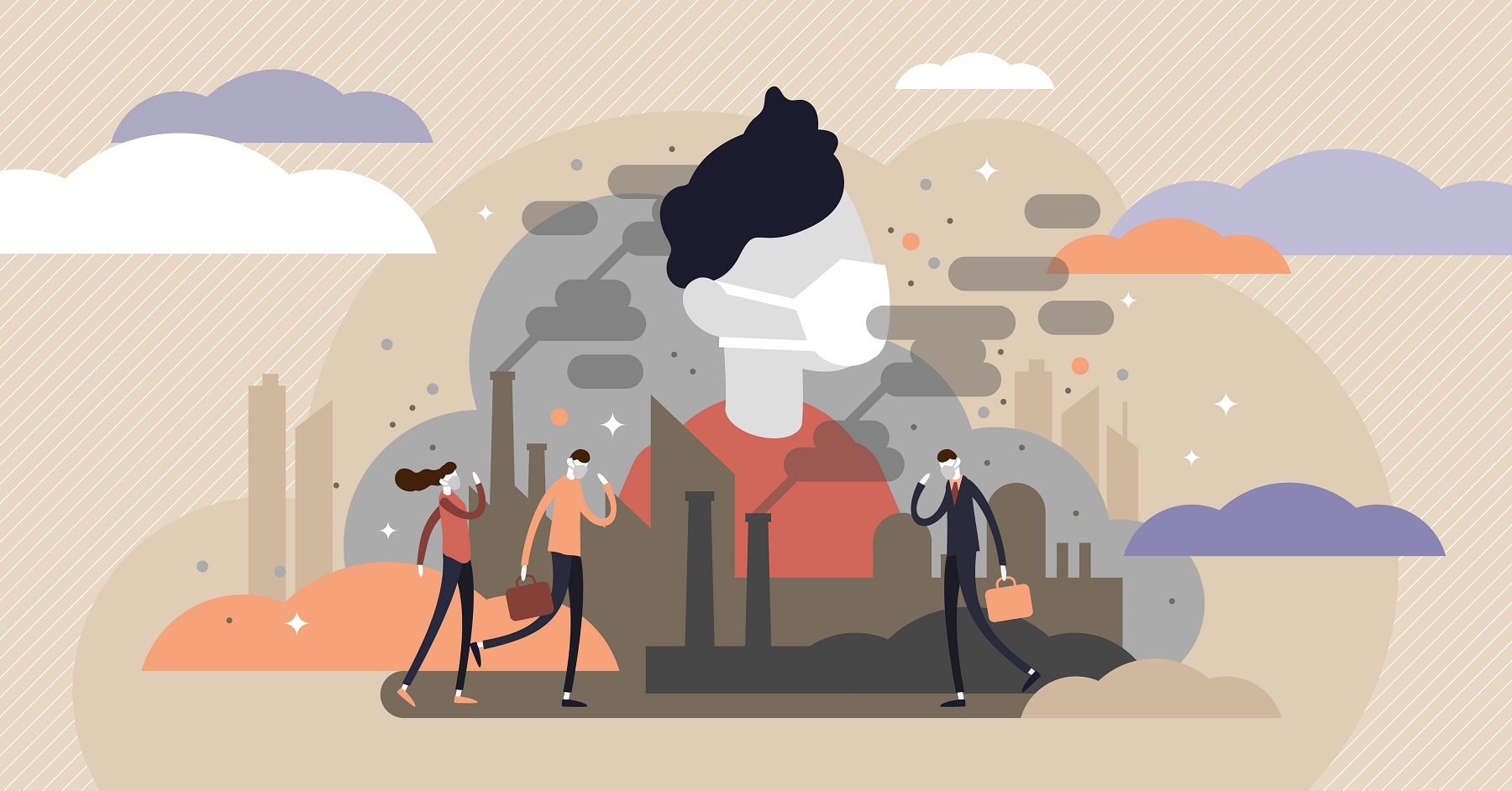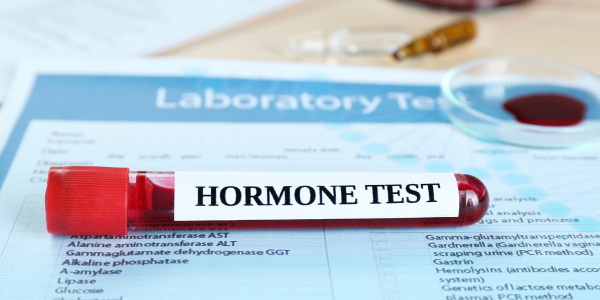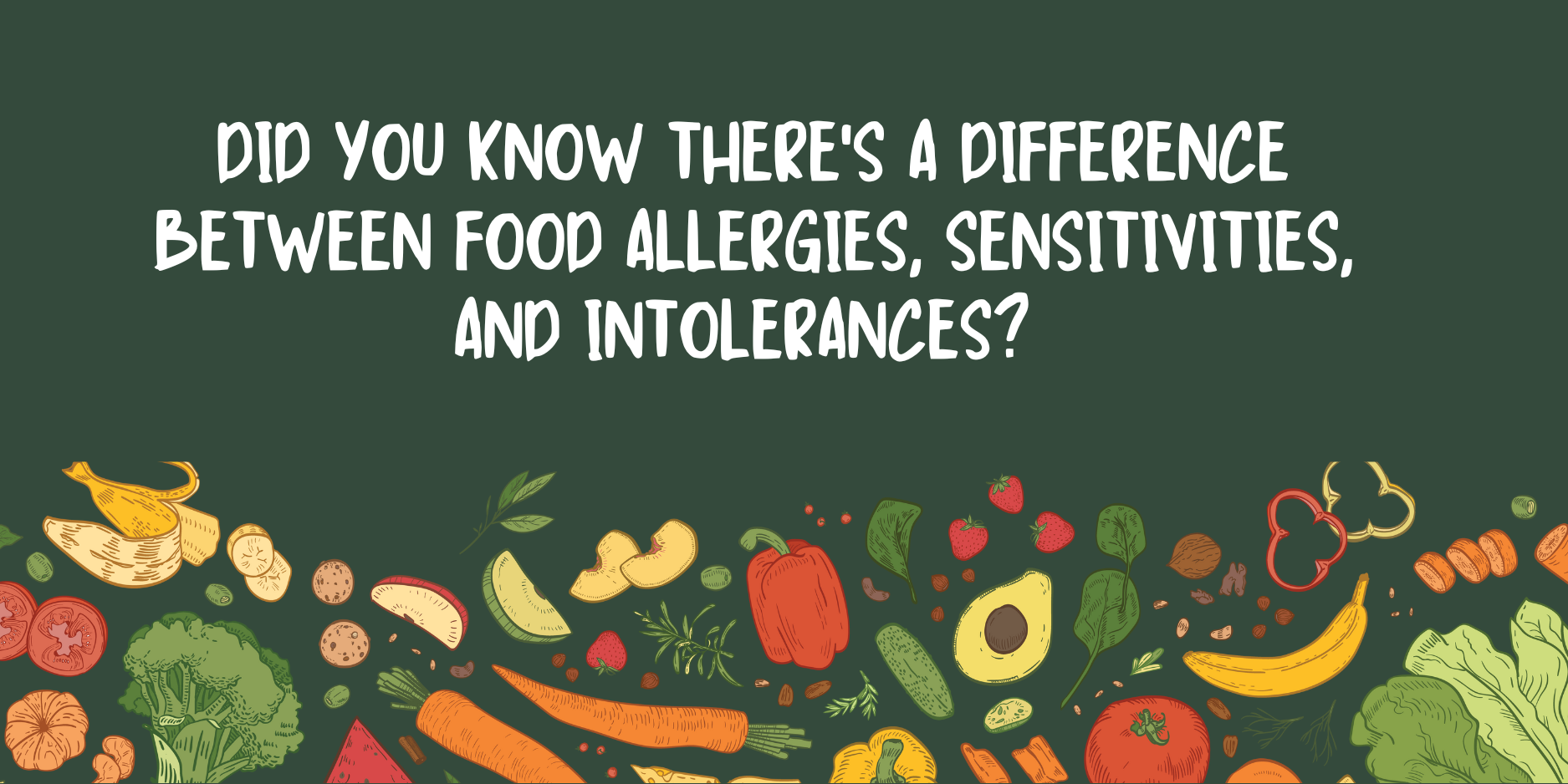

When you hear the word “toxins,” what comes to mind?
Maybe you think of the chemical warning label with the skull and crossbones or a factory with smoke plumes coming out of its chimneys. Maybe you think that as long as you stay away from a handful of harmful substances you should be fine, right?
Well here’s a fact – toxins are all around us. You and I are exposed to them every single day and also have them stored in our bodies.
What exactly are these environmental toxins?
How did they get there in the first place?
What can you do to remove them from your body?
Let’s explore these questions and more in this blog post!
What are environmental toxins?
Environmental toxins are any substances found in your surroundings that have a harmful effect on your body. Another way to think about environmental toxins is as endocrine disrupting chemicals or hormone disrupting chemicals. This is because environmental toxins interfere with your hormones and hormone pathways that regulate proper body function. They can also interfere with the cells of organs that are part of your hormone pathways. Because of this, toxins have been linked to health issues such as cancers, metabolic dysfunction, neurological symptoms, immune system disorders and reproductive concerns.
Examples of environmental toxins include but aren’t limited to:
-
- Heavy Metals (see previous blog post for more info)
- Insecticides, fungicides and herbicides
- Parabens
- Phthalates
- Volatile organic compounds (VOCs)
- Polybrominated Diphenyl Ethers (PBDEs) and Polybrominated biphenyl (PBB)
- Perfluorochemicals (PFCs)
- Polychlorinated Biphenyls (PCBs)
- Polycyclic Aromatic Hydrocarbons (PAHs)
While these chemical names can be intimidating, it’s important to remember that these environmental toxins are found everywhere. And everyone should pay attention to this because all Americans have chemicals stored in their fat. In addition to stored chemicals, every year the average person is exposed to 14 pounds of herbicides, food additives, preservatives, chemicals, and pesticides.
Now even though you’re exposed to a certain amount of toxins daily, your body has systems in place to filter out these toxins to keep you healthy. These systems must be functioning properly to filter out these toxins. This is where detoxification comes in.
What is detoxification?
There’s no doubt that “detox” is a buzzword in the health and wellness industry. While some health gurus on social platforms may share “detox tips” that are not backed by scientific studies, this doesn’t change the importance of your need to detoxify your body of environmental toxins.
So, what exactly is detoxification?
Other scientific terms used for detoxification include biotransformation and elimination. It describes how your body processes toxins and removes them from your body.
Which organ is a key player in detoxification?
A major player when it comes to detoxification is your liver. Your liver acts like a dishwasher – just like the dishwasher will use soap and water to clean the food and gunk off of dishes, your liver cleanses your body of toxins.
Now let’s say that you have more dishes to load than your dishwasher can hold. The good news is you can do more than one load. But this isn’t the case with your liver. If incoming toxins exceed your liver’s ability to remove them, it creates a toxic burden. When your body can’t keep up with the growing toxic burden, you’ll start experiencing symptoms from environmental toxin exposure. We’ll dive further into this later on in this article.
How does your liver eliminate environmental toxins?
Your liver will eliminate toxins through a 2-step enzymatic process: Phase I and Phase II. You can think of enzymes like scissors and glue: they’re proteins that either break down substances or build up substances.
In Phase I, a series of enzymes called Cytochrome P450 will change fat-soluble toxins into a more toxic intermediary metabolite. The intermediary metabolite is generally more toxic than the original fat-soluble toxin, so your body needs to enter Phase II to completely eliminate the toxic byproducts.
In Phase II, the conjugation of molecules onto the intermediary metabolite makes it non-toxic and water-soluble. This way, the conjugated intermediary metabolite is eliminated via Phase III detoxification–through your urine, stools, or sweat.
This is why it is important to make sure all elements in Phase III are working properly before beginning a detoxification process, and to make sure Phase II is equally as upregulated as Phase I, so the toxic intermediate metabolites do not get stuck in your body and make you more toxic. For these reasons, we always make sure there is good hydration, regular bowel movements, and adequate levels of nutrients and co-factors to support Phase I and Phase II detoxification before starting a detox of any kind.
What are other organs that help your body detoxify toxins?
While it’s the main player in your detoxification pathways, your liver isn’t the only member of the detoxification team. Other organs that play a part are:
- Kidneys– Just like you use a water filter and air filters in your home, your kidney is your body’s filtration system. It filters out toxins that leave your body through your urine.
- Gastrointestinal tract– The food you eat may contain toxins, so your digestive system plays a part in detoxification. Your body gets rid of these toxins through defecation. Your gut must be functioning properly during detoxification to avoid toxin buildup.
- Skin– While exercising may help you feel good due to your body’s release of endorphins, getting a good sweat session in can also help you detoxify your body. This is because your body releases toxins through your sweat glands. This is also why infrared saunas may be beneficial to detoxification as well.
- Lungs– While you probably learned in grade school science class that your body inhales oxygen and exhales carbon dioxide, it’s not the only gaseous product your lungs release. You also exhale toxins.
When it comes to environmental toxins, there are two categories: fat-soluble and water-soluble.
- Toxins that are fat-soluble act like a magnet to fatty portions of cells throughout your body. For example, metals are toxins that are attracted to your fat and bones.
- Toxins that are water-soluble can be eliminated more easily through your kidneys via urine.
It’s important to know the difference because distinct testing and detoxification protocols have to be followed for fat-soluble and water-soluble toxins. The two groups of toxins interact with your body differently.
So how is our body exposed to these toxins? Let’s look at ways these environmental toxins can enter our bodies.
What are the ways environmental toxins enter my body?
You’re exposed to environmental toxins daily, and have environmental toxins stored in your body right now – we all do. But how do they get there in the first place? Here are five common areas:
1. Food
There’s no surprise that what you put into your body is going to affect your overall health. Food is something your body needs for energy, and danger comes when food is contaminated.
The most well-known environmental toxin on food is glyphosate. Glyphosate is an herbicide that’s found in Roundup by Bayer/Monsanto. It’s the most commonly used herbicide in farming and lawn care in the United States. Glyphosate is found in produce as well as honey, flour, infant formula, bread, and bagels. It’s a possible carcinogen to humans and is harmful to endangered animals and plants.
Other ways that food can be contaminated by environmental toxins include:
- Pesticides like aldrin, chlordane, and DDT that contaminate our crops
- Food packaging methods can contaminate food due to chemical migrants leaching from the packaging material
- Heavy metals from mining such as arsenic and mercury that contaminate the soil or drinking water of livestock
- Heavy metals in food sources such as cadmium in soybeans, copper in edible seeds, mercury in rice samples, and zinc, iron, and manganese in fish
- Polycyclic aromatic hydrocarbons (PAHs) from petroleum have spilled into the ocean and affect marine life
These environmental toxins are stored in food sources that you may eventually ingest. It’s important to be aware of them and try to avoid foods that contain these toxins.
2. Water
Water is essential to all life. Thankfully in the United States, the majority of individuals have running water. However, the Environmental Working Group found over 250 contaminants in this drinking water.
How did running water become contaminated? Here are some culprits:
- Heavy metals from natural sources– Some rock and soil contain heavy metals and radioactive nuclides that can migrate to groundwater.
- Water treatment and distribution– Water treatment plants can remove a majority of contaminants, but they can leave behind byproducts too. One byproduct is trihalomethanes, a substance that’s produced when chlorine is used to disinfect water. Other byproducts include lead and copper that may get into water from corrosive plumbing pipes.
- Agriculture and farming– Pesticides and fertilizers can be transported from crops to lakes and water sources by rainwater runoff or snow.
- Animal and human waste– Septic systems and sewage can transport harmful microorganisms into our drinking water such as E. coli, Cryptosporidium, and Giardia.
- Pollution– All forms of pollution can seep into our water. Air pollution can evaporate and settle into water sources such as our oceans, lakes, and rivers. Land pollution can cause toxins to seep underground and affect our rivers and oceans.
3. Air
There are six common air pollutants found everywhere in the United States. These include:
- Lead
- Sulfur dioxide
- Nitrogen dioxide
- Carbon monoxide
- Ground level ozone
- Particulate matter (particle pollution)
Other common air pollutants are
- Dioxins
- Toluene
- Asbestos
- Benzene from gasoline
- Perchloroethylene from dry cleaning facilities
- Methylene chloride from paint strippers and solvents
Humans spend about nine times as much time indoors compared to outside. So your indoor exposure to pollutants is 10 to 1,000 times higher than outdoor exposure. Indoor air pollution increases when not enough outdoor air comes in to dilute and remove indoor air pollutants. Indoor air pollutants include biologic pollutants (like mold, viruses, dust mites, and pollen) and chemical pollutants (carbon monoxide, ozone, volatile organic compounds, and radon).
Purifying your air is important, and I’ll give you my recommendations later in this blog.
4. Indoor products
Items you bring inside your home or office may contain environmental toxins.
- Furniture– Your couch may contain flame retardants in the foam and outer fabric. Flame retardants may be able to migrate from the furniture to your body and may cause health effects.
- Cleaning products– Weekly cleanings are a must for home – but be aware that not all household cleaners are toxin-free. Some contain chemicals that are human carcinogens such as formaldehyde, which can be found in citrus and pine oil cleaners and essential oils. Some detergents may contain 1,4-dioxane which is a suspected human carcinogen.
Other toxic chemicals in cleaning products including:
- Chlorine bleach (Sodium hypochlorite)
- Petroleum distillates in metal polishes
- Ammonia in your window cleaners
- Naphthalene and paradichlorobenzene in mothballs
- Hydrochloric acid or sodium acid sulfate in toilet bowl cleaners
- Skincare products– Your skin is your body’s largest organ. The average person is exposed to 126 unique chemicals throughout their skincare products. Just think about how many products you may use while getting ready in the mornings?
You have your soap, face wash, shampoo, condition, towel that touches detergent and dryer sheets. If you’re a woman, you also use makeup and various lotions. Synthetic preservatives and parabens found in most skincare products are endocrine disruptors and may contribute to reproductive toxicity, infertility, birth defects, and developmental defects.
If you’re shopping for personal care products, I recommend that you avoid products that contain parabens and phthalates to start with.
It’s important to be aware that not all “green labeled” brands are actually good for you too. They may not be disclosing all of the ingredients. That’s why “natural” doesn’t always equal non-toxic.
5. Outdoor products
While environmental contaminants can be found indoors, they can also be found right outside your home! A common contaminant is pesticides.
- Pesticides– While weeds can be annoying, pesticides may not be the best way to deal with them. If you or your animals are exposed to pesticides, you may be in for unwanted symptoms. Pesticides may kill weeds and insects but also cause harmful health effects to you too.
What are the health effects of environmental toxins?
Environmental toxins are found in our air, water, soil, and products. So, unfortunately, environmental toxins are unavoidable and can cause health effects. The Global Alliance on Health and Pollution estimated that 8.3 million people died from pollution exposure in 2017 (which may be an undercount).
Health effects may include:
- Birth defects
- Gastrointestinal symptoms such as diarrhea
- Cancers including cancers of the brain, breast, and prostate
- Respiratory diseases such as asthma, allergies, lower respiratory infections, and pneumonia
- Neurological symptoms that affect the central and peripheral nervous system
- Neuropsychiatric disorders including attention-deficit/hyperactivity disorder, autism, intellectual disabilities, and dyslexia
The rise of environmental toxins is also a major contributor to autoimmune diseases and chronic conditions. Your body can become overloaded by environmental toxins and their effects over time. When a toxic burden occurs, this triggers your body to respond to inflammation. When chronic inflammation occurs, this can lead to autoimmunity and other diseases.
Some individuals may be more sensitive to toxins than others. You may have a genetic mutation which can affect the enzymes in your detox pathway to process toxins slowly. There are several of these single nucleotide polymorphisms (SNPs) that play a role in detoxification. Your body may also have a hard time removing toxins due to other stresses your body is experiencing such as:
- Poor effects from eating processed foods, high sugar, and low protein diet
- Lack of adequate hydration
- Gut microbiome imbalances
- Stress from internal and external factors
- Infections
- Nutrient deficiencies
The buildup of toxins will then contribute to health effects like the ones stated above.
What are ways I can detox my body?
You’re constantly exposed to environmental toxins. So it’s important to do all you can to get rid of the toxins you’re already exposed to. Of course it would be ideal to get tested by a functional medicine practitioner, to learn what your specific toxin exposures, and to be able to optimize your own personal detoxification process. If you are unable to work with a functional medicine provider, here are several ways to detox that may be helpful:
1. Utilizing an IR sauna
If you’ve gone to a spa or your local gym, you may have utilized their sauna. These traditional saunas heat the air around you which eventually warms your body. An infrared sauna uses light to create heat, so you get even more benefits than from a traditional sauna.
2. Using binders like charcoal or clay-based products
Toxin binders can help your body reduce its toxin levels. They work by binding and eliminating toxins from your body.
Clays such as zeolite or bentonite clays can trap toxins by encapsulating them and removing them from your body. These substances may also decrease zonulin, a molecule that opens up spaces between your intestinal lining that can contribute to a leaky gut.
Activated charcoal acts like a sponge and has the superior ability to absorb environmental toxins and poisons. The toxins stick to the charcoal and are excreted from your body.
3. Taking antioxidants like glutathione that protect the cells
Environmental toxins can create free radicals, so your body needs antioxidants to fight off these harmful free radicals. This is where glutathione comes in: your body’s main antioxidant and detoxifier.
Your body’s ability to produce glutathione decreases with age. Environmental factors and products you consume may also decrease glutathione levels. Supplementing with glutathione can help decrease your body’s harmful free radicals, especially when you are going through a detoxification process. Glutathione also plays a role in Phase II detoxification pathways. Glutathione is conjugated and eliminates the environmental toxins from your body.
If your body’s deficient in glutathione, this may lead to disease and chronic conditions.
4. Participating in a gentle detoxification program
The “Detox with Your Doctor” program utilizes a 7-day program that helps you restore your elimination functions and detoxification pathways. The kit includes several items including micronutrients, phytonutrients, and protein that supports detoxification.
It comes with products such as:
- A powder that supports Phase II detoxification pathways and increases your cellular energy to remove these toxins.
- A multivitamin and mineral that enhances Phase I and II liver detoxification pathways. It includes a high amount of antioxidants like Vitamin C and E that can scavenge free radicals to protect your cells from toxins.
- A supplement combination that contains lipotropics to help you burn fat, methylation factors, choleretics to help your bile flow easily, and milk thistle to aid your liver with detoxification.
The program also comes with a patient guide so you know which foods to avoid and which you can eat. Patients have said that going through the program has helped them improve their bowel movement regularity, decrease inflammation, reduce weight, and provide more energy.
5. Filtering your water using a reverse osmosis water filtration system
Your water may contain contaminants, so it’s important to filter them out before drinking. I recommend a reverse osmosis water filtration system to remove environmental toxins. It works by using pressure to push water through a membrane: you’ll be left with clean water on one side of the membrane and the toxins on the other side of the membrane.
If you want to learn more about water purification and finding the best filter for your home, I highly recommend this course by Lara Adler.
6. Ensuring your air is purified using air filters
Your air contains toxins, and it’s important to do what you can to reduce the number of toxins you’re exposed to. I recommend and use an IQAir personal filter – it’s on my desk right now. In addition to IQAir filters, if you’re a patient at my practice, you probably saw my Austin Air Healthmate Junior Plus filter. While there are similar air filters to these two, I highly recommend the IQAir and Austin Air filters.
If you were to choose one place for an air filter, I recommend your bedroom since that’s where you spend the majority of your time. You can also place filters in the common areas of your home and your office. The size of the filter you need will depend on the size of the room it’s in.
7. Consume organic foods
Foods are one of the main sources of environmental toxins in your body. It’s important to decrease your exposure to pesticides and herbicides like glyphosate. You can do this by eating organic foods.
The foods that I highly recommend that you eat organic are The Dirty Dozen. The Dirty Dozen is a list of produce that’s tested to see which contain the highest amount of contaminants. The list includes:
- Celery
- Pears
- Apples
- Grapes
- Spinach
- Cherries
- Peaches
- Tomatoes
- Nectarines
- Strawberries
- Hot peppers and bell peppers
- Kale, mustard and collard greens
Looking for other ways to detoxify and reduce your exposure to environmental toxins?
There’s no doubt that environmental toxins are everywhere. Since you can’t avoid them, it’s important to reduce your exposure to them.
As a functional medicine doctor, I teach patients that the foundations to health are:
-
- Nutrition
- Sleep
- Exercise and movement
- Stress management
- Toxin reduction
Most people know about the top four, but don’t focus too much attention on the last point – toxin reduction.
The “Detox with Your Doctor” is a great program to check out if you’re looking for a 7-day detoxification program. If you’re looking for a more in depth educational program for your whole health, check out my 7-Week Wellness Masterclass. In it, you’ll learn about detoxification as well as a plan to reintroduce foods into your diet. It’s a great option if you’re struggling with food sensitivities. In addition to detoxification, it also includes your roadmap to total wellness. If you think you are struggling with toxin exposure of any kind, it would be best to connect with a functional medicine provider who can test and treat you for your specific toxin exposures. We would be happy to help here at Arizona Wellness Medicine.
Here’s to your health,
Dr. Emily Parke
Share:
Dr. Emily Parke
Social Media
Most Popular Posts
Subscribe To Our Newsletter
Related Posts

New Podcast Episode: My journey into functional medicine + what I’ve learned
I’m excited to share that I recently joined DeLo for Episode 165 of the On the DeLo podcast! In this conversation, we explored my journey

Understanding the Essential Labs for Women on Hormone Replacement Therapy (HRT)
So what are the minimum labs we’re looking at when we do hormone replacement therapy? We obviously want to look at an estrogen level, so

How to figure out the right amount of HRT in women
What about checking lab values when you’re on hormone replacement therapy? I do find it to be helpful, but we also want to consider symptoms.

Did you know there’s a difference between food allergies, sensitivities, and intolerances?
Did you know that there’s a difference between food allergies, food sensitivities and food intolerances? Food allergies, the reactions tend to happen pretty immediately and
